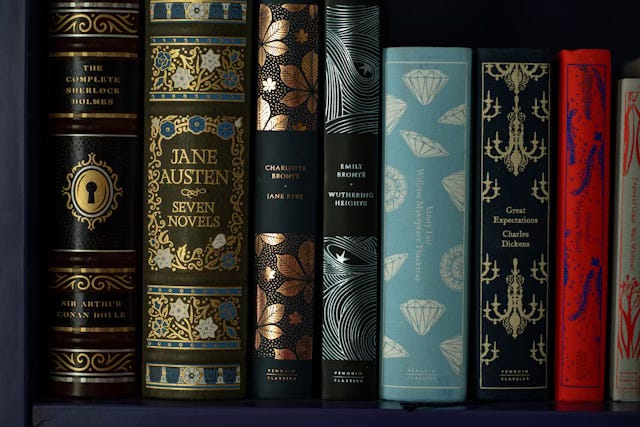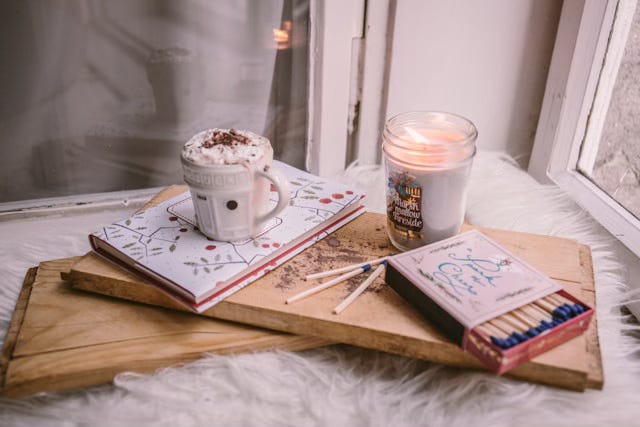Writing as Reinvention
Everything Old Is New Again
Writers often hear that only a set number of basic storylines exist in the world. The number differs, depending on the speaker, but seven, or sometimes even three, get tossed around with regularity. A writer’s job is to take one of those foundational plots—or perhaps, daringly, more than one—and transform it into something new.

Literary agents constantly tell writers that they’re looking for a fresh take on popular genres or tropes. Rejection letters get peppered with phrases such as “not different enough to stand out in this crowded market” and “too similar to something already on my list.” Likewise, agents often get asked what they’re seeing in the market at the moment—what are the current trends, the hot sub-genres, the books likely to get an offer of representation?
Writing-to-market rarely works, because trends shift faster than most writers can produce a polished manuscript and get it published. As for predicting the next big thing, it’s possible to make an educated guess based on previous cycles of popularity and what’s going on in the world, but there are no guarantees.
So, where does that leave you? How do you write something new? If there are only a few potential stories out there, what makes your interpretation unique enough to catch a reader’s attention?
If you’re curious about the theory of limited story frameworks, I recommend Christopher Booker’s work, The Seven Basic Plots: Why We Tell Stories, or, for the classicists out there, Aristotle’s Poetics. But if you just want to brainstorm your next brilliant book concept, go stare at your bookshelves and pull out a few of your favorite novels—the ones you go back to when you need comfort or to sink down for a few hours with beloved characters or because you see something else each time you read them.
Reread those favorites and consider why you love them. What, if anything, do they have in common? Are you gravitating to certain types of characters or character arcs? Really drill down and examine the smallest details of the stories that bring you back again and again. Then ask yourself: How can you write something that uses similar tropes or characteristics? Which of these details that pull you in would make a great jumping off point for something new?

Consider all of the books that had their origins in a classic tale. Some are obvious retellings, like James Joyce’s Ulysses, Madeline Miller’s Circe or The Song of Achilles, Marissa Meyer’s Cinder. Other books use classic stories as the vaguest inspiration for their work, rewriting from a different character’s point of view, or reimagining to the point where you might not even realize the connection unless familiar with the context. For instance, Jean Rhys’s Wide Sargasso Sea, which serves as an imagined prequel to Charlotte Brontë’s Jane Eyre, takes only the smallest details from the classic that inspired it. Zadie Smith’s On Beauty was loosely inspired by her love for Howard’s End by E.M. Forster. And of course, Gregory McGuire’s Wicked tells the origin story of the Wicked Witch of the West in an elaborate reimagining of the circumstances behind The Wonderful Wizard of Oz.
But a new twist on a popular trope or storyline does not need to be a retelling of an entire story. Many classics use familiar core concepts, such as rags-to-riches, man-against-nature, or boy-meets-girl. The latter (or a variation) makes up every romance novel ever written. The first and third combine for Cinderella, sure, but so many other stories as well. Man against nature could be Herman Melville’s Moby Dick or Jack London’s The Call of the Wild, but also Mary Robinette Kowals’s The Calculating Stars.
What little details make you more likely to purchase a book? Are you a sucker for enemies-to-lovers romances? Does time travel tick a box for you? Many of these features come and go across genres and across trends. Even the most trendy subjects can be reinvented and experience new surges in the marketplace. Vampire stories have evolved steadily, reforming in the popular imagination from the villains of the piece, such as with the classic Bram Stoker Dracula, to evil protagonists with whom we sympathize in Anne Rice’s Interview with the Vampire—which examines the consequences of immortality and having to live a restricted existence, to misunderstood love interests in recent books, such as Stephenie Meyer’s Twilight.
Literature students might be familiar with the term “writing in conversation with,” which occurs when an author’s work reflects the writing of authors who came before, whether by building on themes or style or by creating something directly in contrast. It can be a conscious act or simply the result of reading widely and ingesting the craft through osmosis. Writers are, first and foremost, readers, and it is impossible to divest your work from the work of authors you’ve read and admired.
Next time you’re hunting for a fresh, big idea, consider what you love to read and how you might put your own spin on it. Maybe you’re destined to write a modern retelling or a gender-swapped version of your favorite classic. Or perhaps there’s just a trope you’ve read repeatedly but never tried yourself. Let the world see what excites you, through your own unique point of view.

Like everyone, I’m finding my calendar getting more and more crowded as we speed toward the holidays. As a result, I’ve got a few heads up for life here at the newsletter. First, I’m going to do a little less craft-heavy writing and more books-and-holidays-related writing between now and the end of the year. I suspect most of you are too busy for deep dives into craft, and if not, there’s a nice archive of tips that should keep you occupied.
That said, I will be issuing a light version of my annual December Writing Challenge. More information coming next week, but it will mostly be run between Instagram and Bluesky, with just the initial rules and tips getting posted here. I hope some of you will participate—it’s always a fun time and I enjoy hearing what people get up to—but of course, see above about super busy time of year. If you’re new to the challenge and are wondering what the heck I’m talking about, rest assured that it’s a very tame challenge, purely designed to keep folks writing during the busy month if they’re looking for some cheerleading/motivation.
For those interested, I did an interview last week with the ladies at Girl in Trouble Stories. We discussed how I got into agenting, tips for submitting, thoughts on the market and some random industry stories. You can listen to it on their podcast, and check out some of their terrific short fiction while you’re there.
Finally, regarding submissions, I’d hoped to leave my query box open until mid-December, but I underestimated the flood. As of now, I’m going to close November 30th. If things slow, I might extend it a few days, but really, I have enough reading to keep me going well into the new year and it’s getting a little scary. So, if you’ve been planning to query, get it to me soon.
That’s it for this time. Thanks, as always, for reading and sharing your time with me. Let me know in the comments if there’s anything you’d like to hear about during this upcoming holiday season. Wishing you a wonderful week, filled with good books and brilliant writing ideas. Until the next one!🥰


I know I told you about this before, but I'll still share for others to see. I had a big idea for a big book, but spent way too long frozen in front of the computer, "buffering," as I called it. So I reconnected with the best therapist I ever had and her suggestion was to pick a book that inspired me and we'd read it together and discuss the aspects about it that are most inspiring.
I chose IT because aside from being my favorite novel, I wanted to write my own coming of age horror. The therapist's strategy worked really well. Despite having read IT 13 times already, I'd never read it through a writer's lens and disseminated WHY I liked various aspects of the story and characters and what I'd do differently. It still took me a long time to write, but it's a big book. Thankfully nowhere near as big as IT, but I did realize through that process that if I'd given my book the "setting as character" treatment like King did with Derry, my book WOULD have been almost as long. I'm also glad I had 4 protagonists instead of 6 1/2, and had the story complete while they were kids, rather than have a kids' half and a grownups half.
....Though someday I DO want to write something with a long-lost childhood friends reunite as grownups to combat a threat from their pasts trope.
We're over here, feeling quite lucky we got to talk to Nephele about this kind of literary question and how writers can be thinking about their approaches.